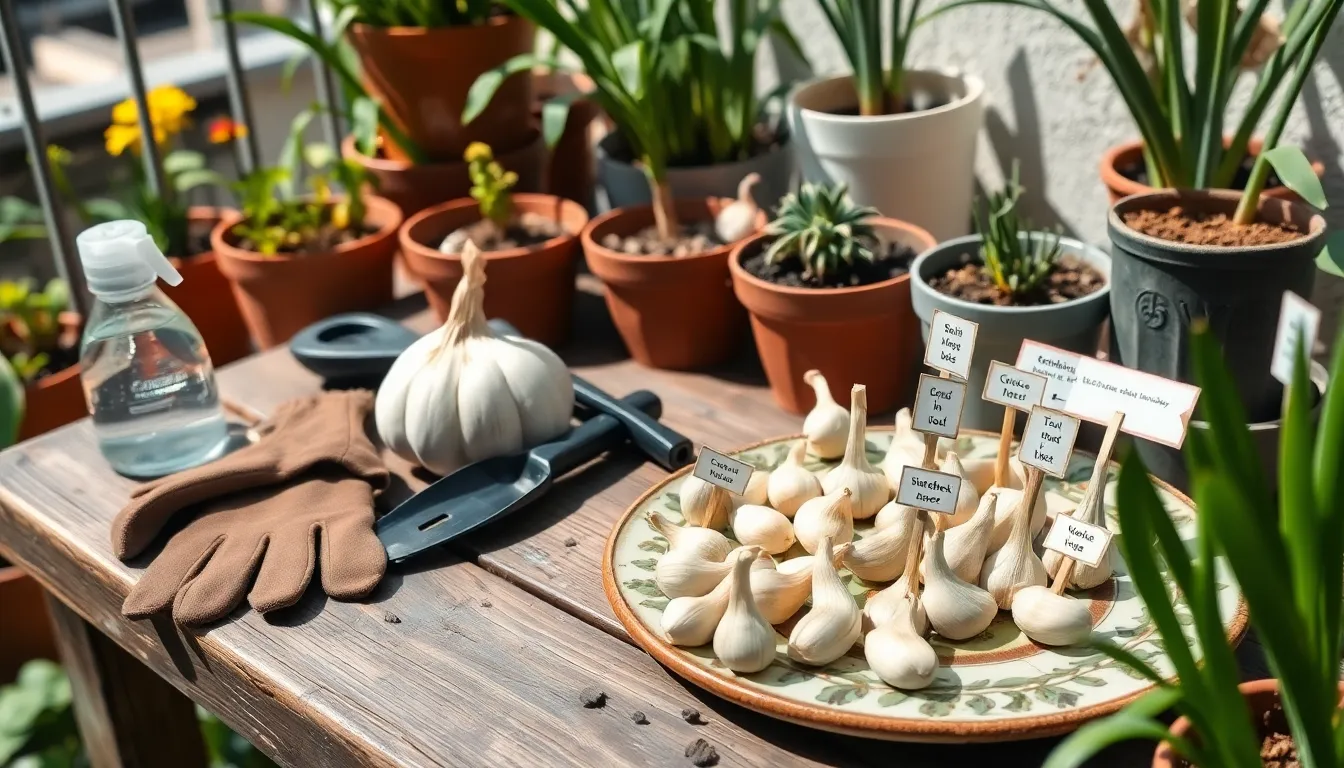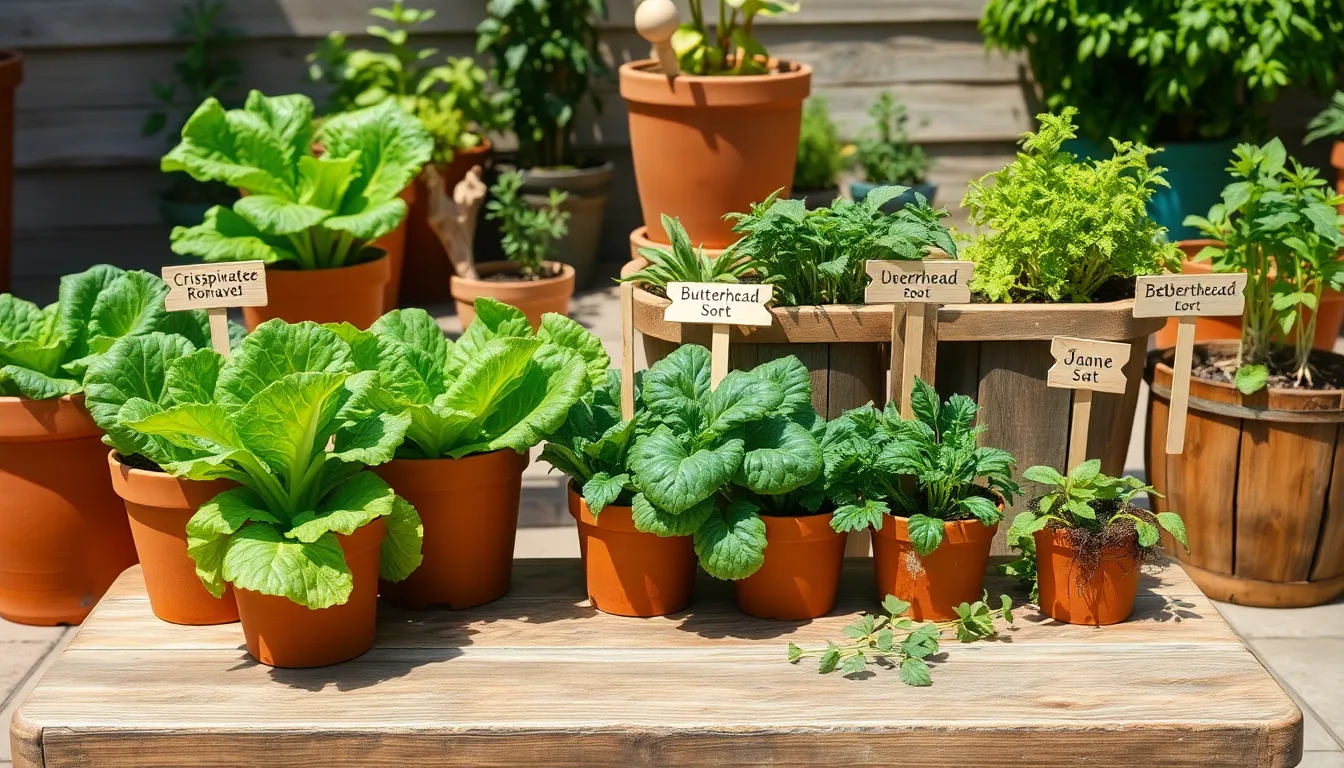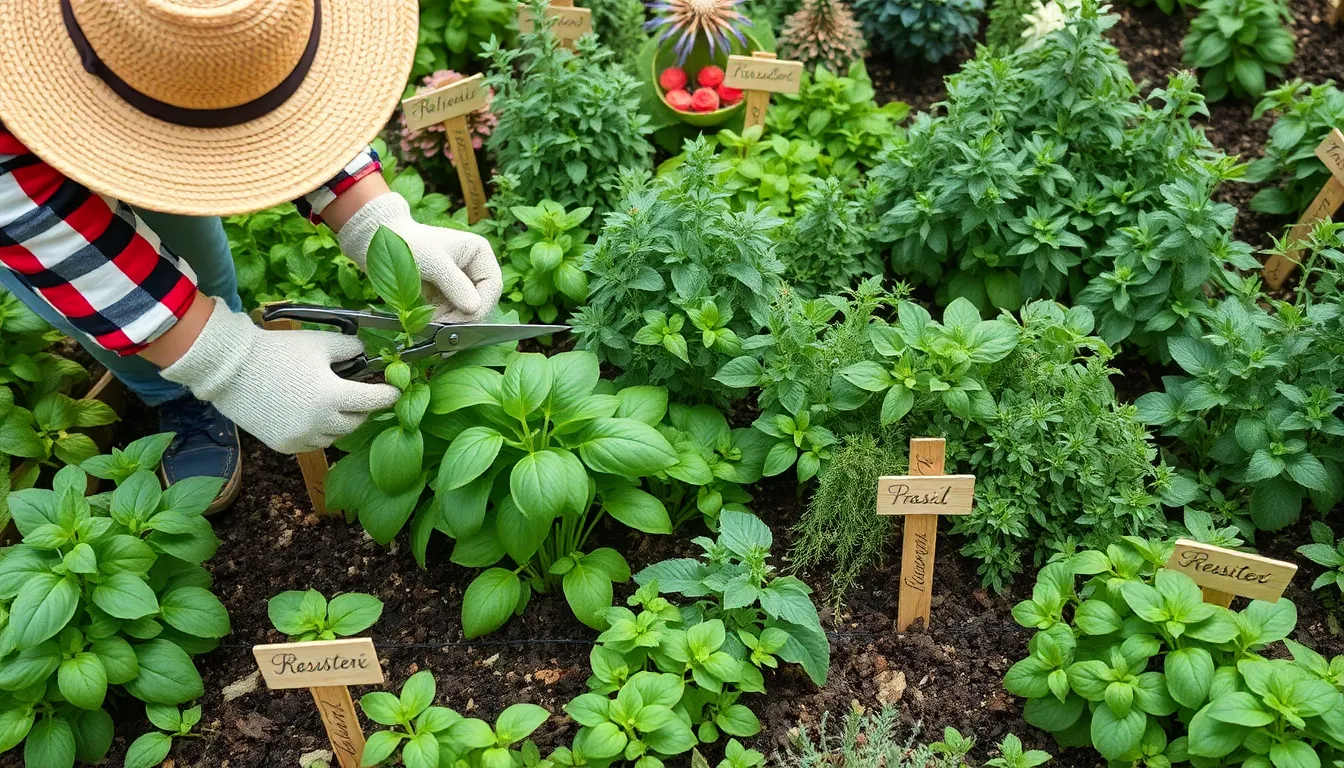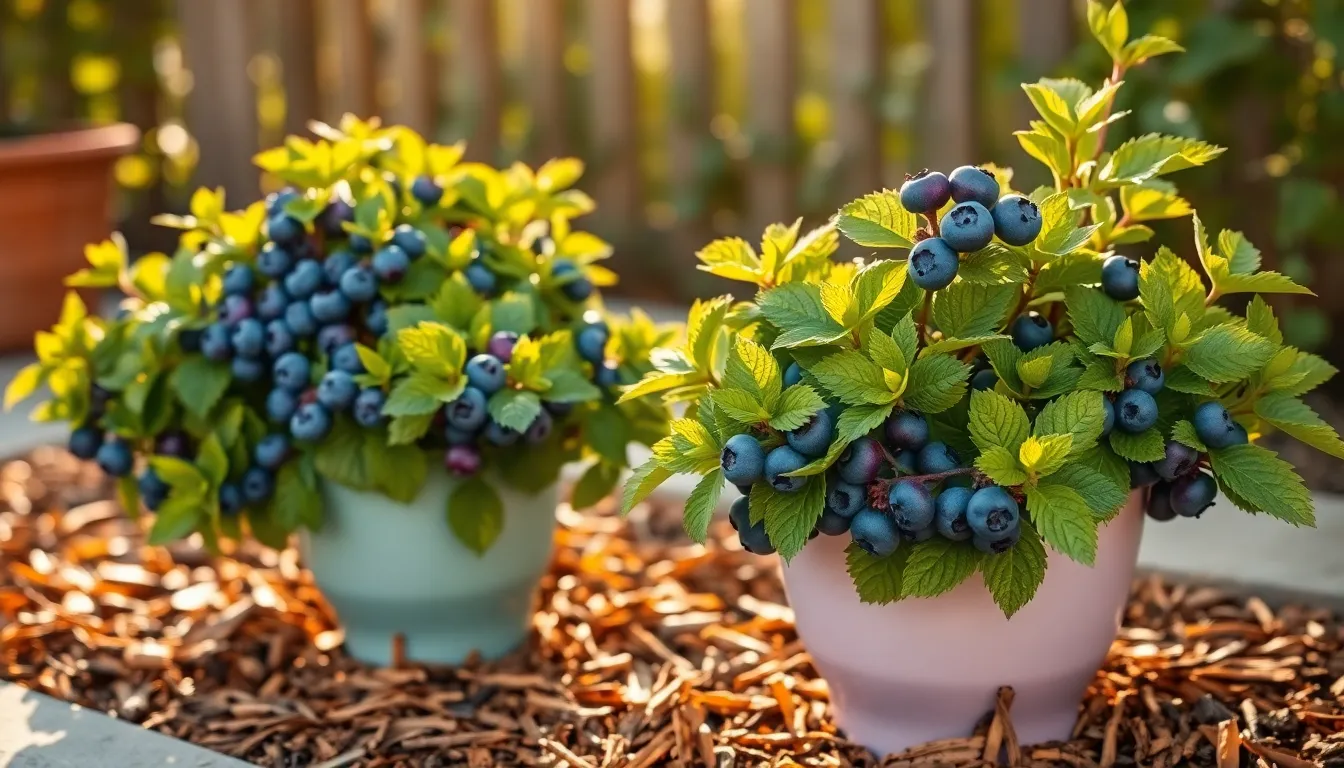Imagine the delight of plucking fresh garlic right from your patio or balcony, infusing your dishes with a flavor that can only come from homegrown produce. Whether you’re a seasoned gardener or just beginning to nurture your green thumb, planting garlic in pots is a rewarding venture that adds a delicious dimension to your gardening repertoire. Garlic, with its rich, unmistakable aroma and health benefits, deserves a place in your container garden, no matter how compact your space may be.
In this article, we’ll guide you through each step of the process, from selecting the perfect pot to harvesting those flavorful bulbs. You’ll discover how easy it is to adapt this typically in-ground crop to container life, ensuring robust growth and a bountiful harvest. By the end, you’ll have all the knowledge you need to cultivate garlic successfully, transforming even the smallest of spaces into a thriving garden. Get ready to roll up your sleeves and embark on this exciting gardening journey with us, as we unravel the secrets of growing garlic in pots.
Select High-Quality Garlic Bulbs
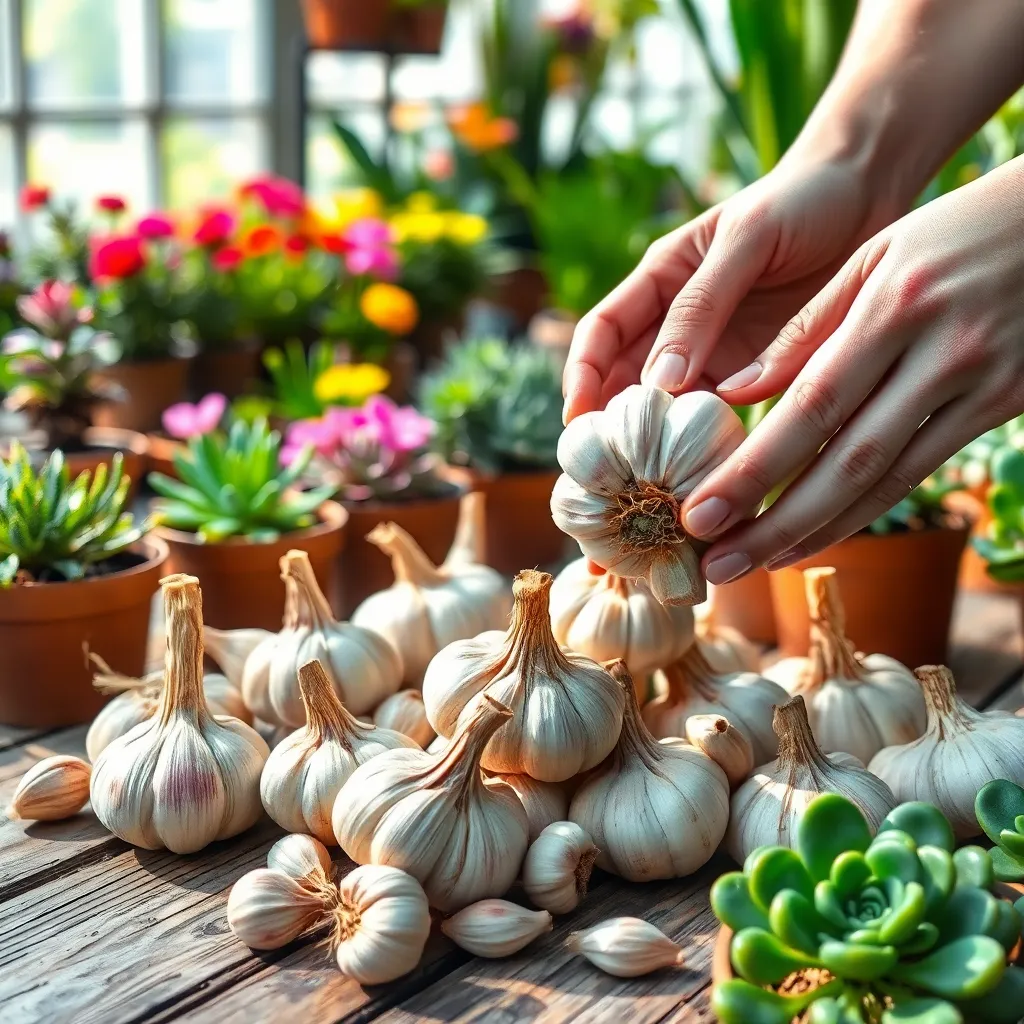
When selecting garlic bulbs for planting, prioritize bulbs that are firm and devoid of blemishes. Avoid soft or moldy bulbs as they are unlikely to thrive in pot conditions.
Look for bulbs with large cloves, as these typically produce stronger plants. Smaller cloves may result in smaller yields, so ensure you choose the best quality available.
Check if the garlic bulbs are suitable for your climate; softneck varieties are generally better for warmer areas, while hardneck types prefer cooler climates. Knowing your local growing conditions will help you choose the right type of garlic for your pots.
Consider purchasing certified disease-free bulbs from reputable suppliers to minimize the risk of pests and diseases. Investing in high-quality seed garlic can lead to healthier, more productive plants.
Prepare Well-Draining Potting Mix
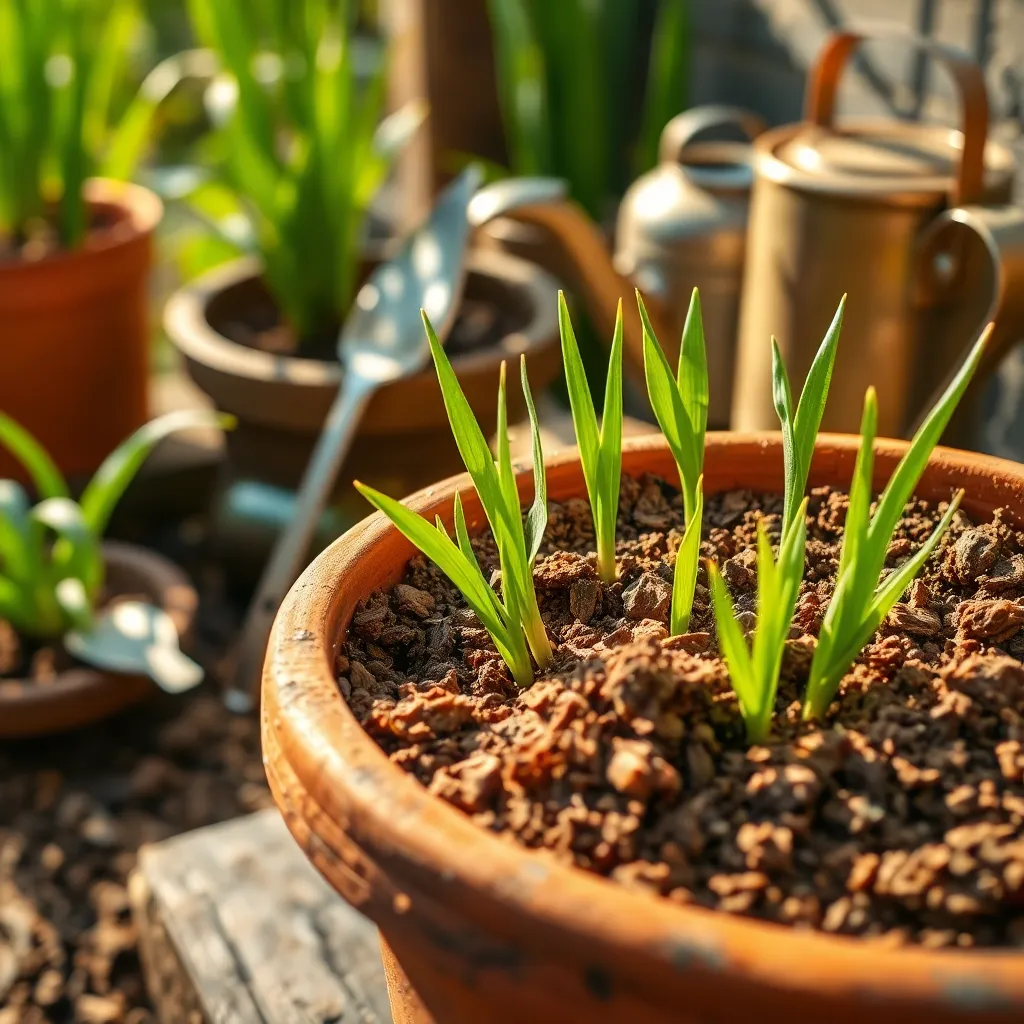
Creating a well-draining potting mix is crucial for growing healthy garlic in pots. Garlic needs soil that allows excess water to escape to prevent root rot and other diseases.
Start by using a high-quality potting soil as your base. Choose one that is lightweight and contains ingredients like peat moss or coconut coir to retain moisture while allowing for drainage.
To enhance drainage, mix in some perlite or coarse sand with your potting soil. As a general rule, aim for a ratio of about three parts potting soil to one part perlite or sand.
For added nutrients, consider incorporating a small amount of well-aged compost into the mix. This will provide essential nutrients and improve soil structure, benefiting garlic growth.
Once your potting mix is ready, fill your pot leaving a few inches of space from the rim. This ensures there is ample room for watering without overflow.
Plant Cloves with Pointed End Up
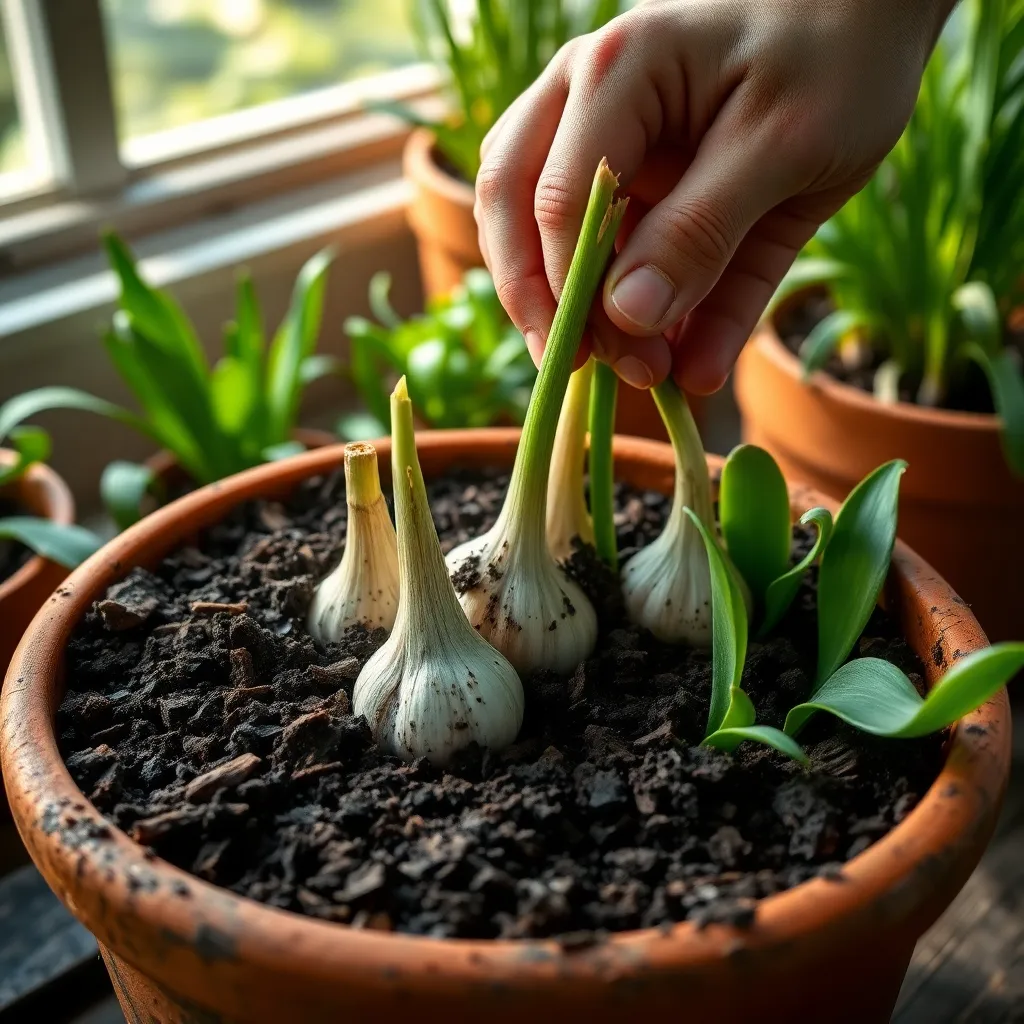
When planting garlic cloves in pots, it is essential to position them with the pointed end facing up. This orientation ensures that the shoot can easily emerge and grow upward, resulting in a healthier plant.
Before planting, gently break apart the garlic bulb into individual cloves, making sure not to damage the clove’s base. Each clove acts as a seed, so handle them carefully to ensure successful germination.
Next, plant the cloves about 2 inches deep in the potting mix, ensuring each clove is spaced about 4 inches apart. This spacing allows the garlic to develop without competition and provides sufficient room for bulb expansion.
After planting, water the soil thoroughly but avoid waterlogging, as garlic prefers soil that is moist but well-drained. Use a pot with drainage holes and a saucer to catch excess water, preventing root rot.
For optimal growth, place the pot in a location that receives full sun, ideally 6-8 hours of sunlight per day. If your climate is particularly hot, some afternoon shade can be beneficial to prevent the soil from drying out too quickly.
As the garlic grows, keep the soil consistently moist, especially during dry spells, but be cautious not to overwater. Applying a layer of mulch can help retain moisture and regulate soil temperature, promoting healthy growth.
Water Gently to Maintain Moisture
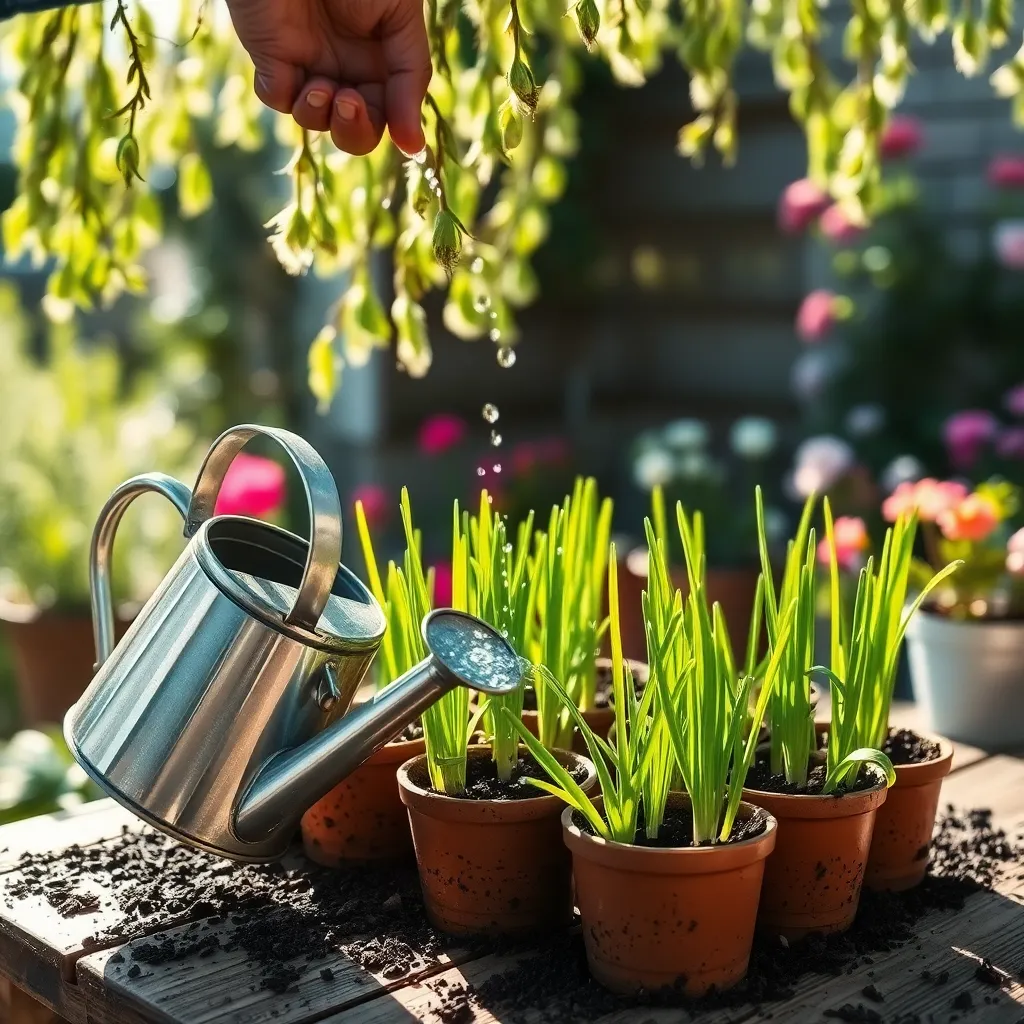
After planting your garlic cloves with the pointed end up, it’s essential to water them gently to maintain optimal moisture levels in the soil. Use a watering can with a fine rose to ensure that the water is distributed evenly without disturbing the soil or the cloves.
The key to successful garlic growth is keeping the soil consistently moist but not waterlogged. Aim for a soil moisture level that feels like a wrung-out sponge, checking the top inch of soil with your finger regularly to assess dryness.
Watering frequency will depend on your climate and the pot’s drainage. In general, you may need to water potted garlic about once a week, but adjust this based on the weather and your pot’s conditions.
For those in warmer climates or during hot spells, you might need to water more frequently. To help retain moisture, consider adding a layer of organic mulch, such as straw or shredded leaves, on top of the soil.
If your garlic is indoors, be mindful of heating systems that can dry out the air and soil. Place your pots in a location with indirect sunlight and away from direct heat sources to prevent the soil from drying out too quickly.
Place Pots in Sunny Location
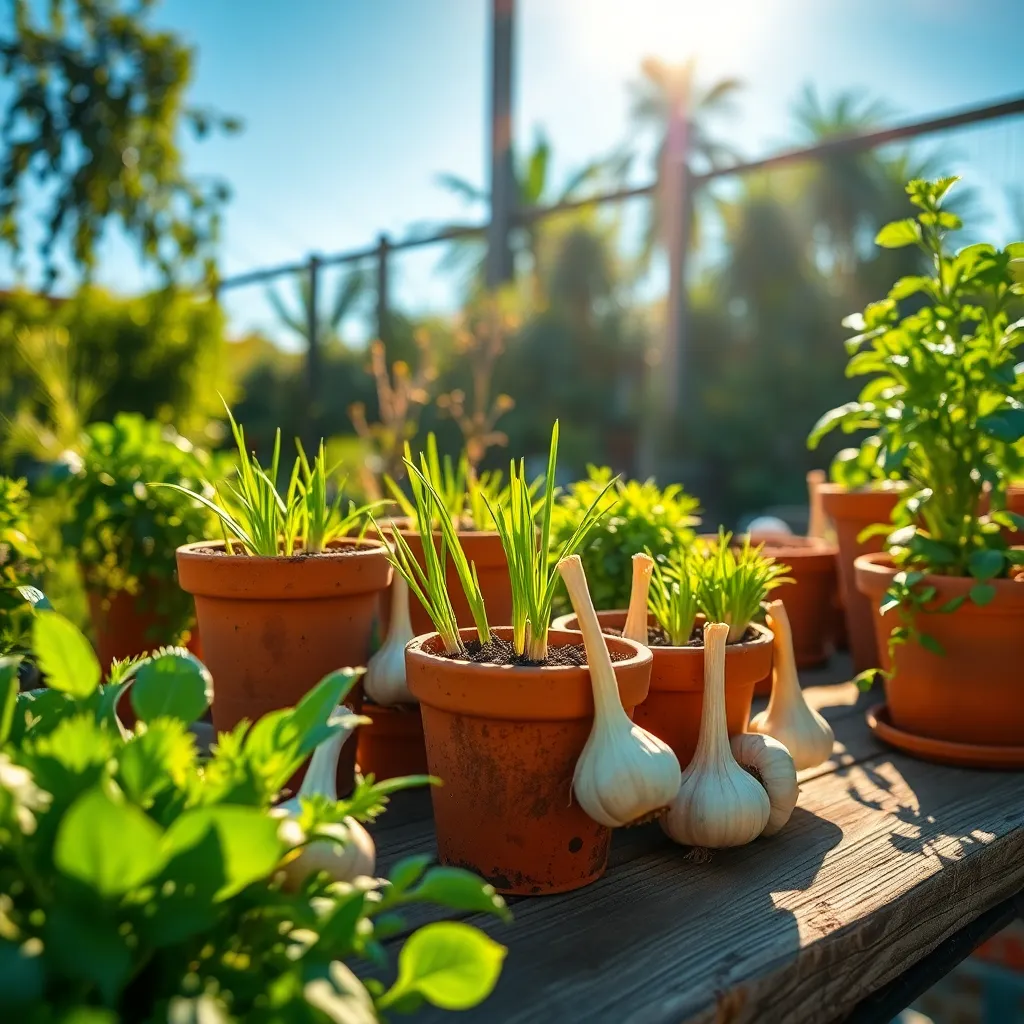
Placing your pots in a sunny location is crucial for the healthy growth of garlic. Garlic thrives in full sun, so aim to position your pots where they will receive at least six to eight hours of direct sunlight each day.
Consider the orientation of your garden space to maximize sunlight exposure. If you are in the Northern Hemisphere, positioning pots on a south-facing patio or balcony can ensure they receive ample light throughout the day.
For urban gardeners with limited space, rooftops or bright windowsills can also serve as excellent spots for growing garlic. Just be mindful of any potential shade from nearby buildings or trees that could limit sunlight.
In addition to sunlight, the temperature around your pots is another factor to consider. Garlic prefers temperatures between 55°F and 75°F during its growing period, so monitor local conditions and adjust the placement of your pots if necessary.
For those in particularly hot climates, providing some afternoon shade can prevent overheating, which might stress the plants. You can use shade cloth or move the pots to a slightly less intense area during the hottest parts of the day.
Conclusion: Growing Success with These Plants
As we’ve explored in ‘Steps To Plant Garlic In Pots,’ nurturing your relationship requires the same care and patience as cultivating a thriving garlic plant. We delved into the essentials: choosing the right pot and soil, akin to creating a supportive environment; planting at the right depth, which mirrors understanding each partner’s needs; regular watering, symbolizing consistent communication; providing adequate sunlight, reflecting the importance of shared experiences; and finally, harvesting at the right time, recognizing and celebrating growth.
Now, take a moment to assess these aspects in your relationship. Which area needs more attention? Choose one small action you can implement today—perhaps a heartfelt conversation or planning a shared activity.
Don’t forget to save this article as a handy guide. Bookmark it now, so you can revisit these steps whenever your relationship garden needs a little extra care.
Remember, successful relationships, like flourishing garlic plants, are built over time with dedication and love. By taking these steps, you’re investing in a future where your relationship can thrive and withstand the test of time. You have the power to cultivate a partnership that’s both resilient and rewarding.

